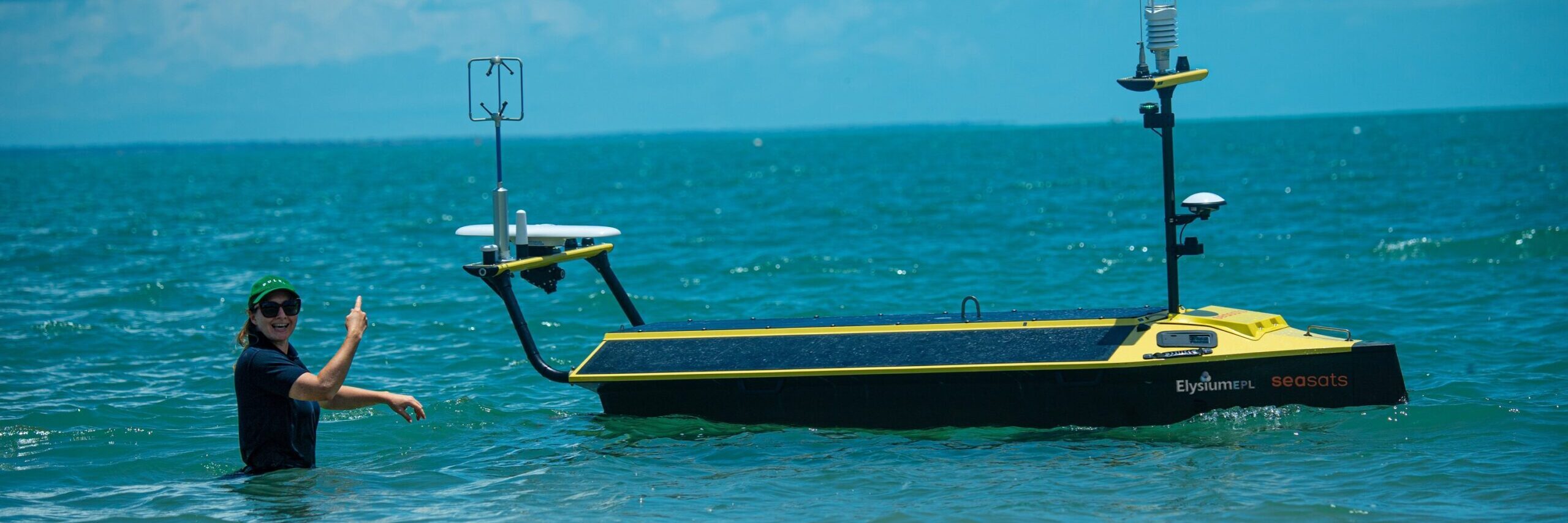Dr Ruth Patterson with USV Monica, one of the SUN Fleet. Photo: supplied
An Australian fleet of robot vessels is to sail the proverbial seven seas collecting data and filling in blanks about our oceans.
And business in robotic surface vessels is taking off, according to those behind the project.
In April, a proposal for a global network of uncrewed surface vehicles (USVs) from an international collaboration led by Charles Darwin University (CDU) Research Fellow Dr Ruth Patterson, was endorsed by UNESCO and the World Meteorological Organisation.
“We are building a market for this new and currently booming industry of uncrewed surface vehicles,” she says.
“Science and industry need to come together and ensure data is precise, co-ordinated, and we have the right instruments in the right locations.”
She says the data they collect is tied to livelihoods, agriculture, fisheries and food security, shipping and more.
“These observations will lead to better weather forecasts in our region and around the world,” she says.
The network, called the Surface Uncrewed Fleet or SUN Fleet, is now one of three in Australia and the 17th worldwide.
Dr Patterson, who is an oceanographer, says USVs are used globally but without a network to manage data collection and distribution from different platforms.
USVs, she says, are powered by renewable energy sources, can traverse tens of thousands of kilometres unassisted and navigate extreme conditions.
“It’s in humanity’s best interests to be invested in this network and this technology,” Dr Patterson says.
“As weather events are becoming more extreme and there are cuts to scientific research, it’s more important than ever to have access to new, accurate and consistent data.
“At the same time, it’s also bolstering the blue economy and the autonomous vehicle market for scientific ocean enterprise.”
FILLING IN THE BLANKS
In the US, National Oceanic and Atmospheric Administration (NOAA) oceanographer Dr Meghan Cronin says the network will have immense value in measuring oceanographic and atmospheric scientific observations.
“USVs will allow us to cost-effectively sample vast areas of the ocean where we simply don’t have enough data,” Dr Cronin says.
“They could be the answer to the question: How do we fill in the blanks?
“The true value of these observations for improving forecasts will come when their data from around the world can be fed into the operational models within minutes of being captured.”
To learn more about the network, visit https://airseaobs.org/sun-fleet





